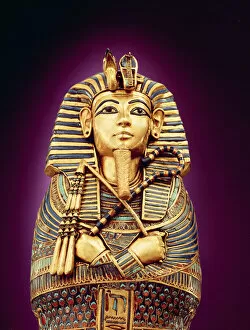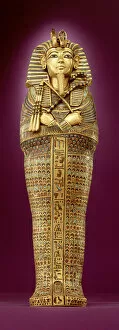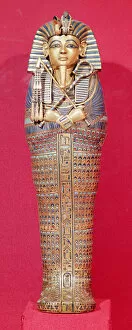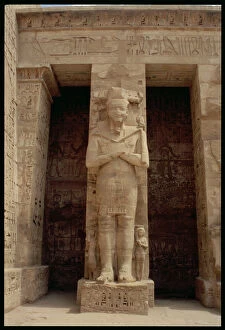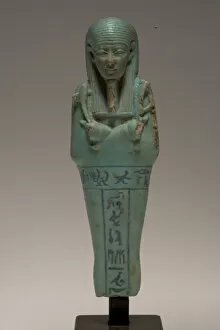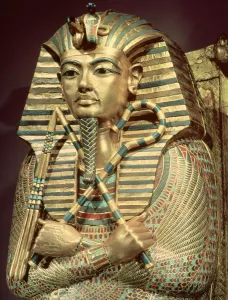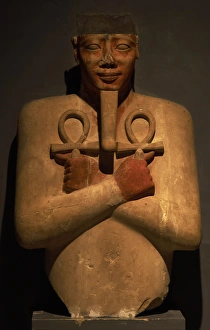Osiride Collection
"Unveiling the Mysteries of Osiris: A Glimpse into Ancient Egyptian Beliefs" Step back in time and immerse yourself in the captivating world of Osiris
All Professionally Made to Order for Quick Shipping
"Unveiling the Mysteries of Osiris: A Glimpse into Ancient Egyptian Beliefs" Step back in time and immerse yourself in the captivating world of Osiris, one of ancient Egypt's most revered deities. From intricately adorned canopic coffins to exquisite statues and shabti figures, these artifacts offer a glimpse into the rich symbolism surrounding this god. Enter the tomb of Tutankhamun and marvel at the interior of one of his canopic coffins, crafted with beaten gold. The detailed front view reveals an awe-inspiring depiction of Osiris himself, showcasing his regal presence as ruler of the afterlife. These coffins served as vessels for preserving vital organs during mummification, emphasizing Osiris' role as protector and guide through death. Further exploring Osirian iconography, two moulds featuring his figure from Abydos showcase how artists immortalized him in various forms. One cannot help but be captivated by their intricate craftsmanship that brings forth both beauty and reverence. Moving beyond Tutankhamun's tomb, an osirid pillar attributed to Amenophis IV (Akhenaten) stands tall at Karnak Temple. This unique representation intertwines elements from Amarna period artistry with traditional New Kingdom aesthetics - a testament to how deeply ingrained Osiris was within Egyptian religious practices. The Cult of Osiris comes alive through a stunning painted wood statue that exudes divine energy. Its vibrant colors evoke a sense of spirituality while highlighting the importance placed on rituals dedicated to this deity. A statuette cast in bronze offers yet another perspective on Osiris' physical manifestation. With its meticulous details capturing every nuance, it serves as a reminder that even though gods may dwell in realms beyond our reach, they remain ever-present within human consciousness. Returning once more to Tutankhamun's resting place, we encounter shabti figures meant to serve him in the afterlife.


